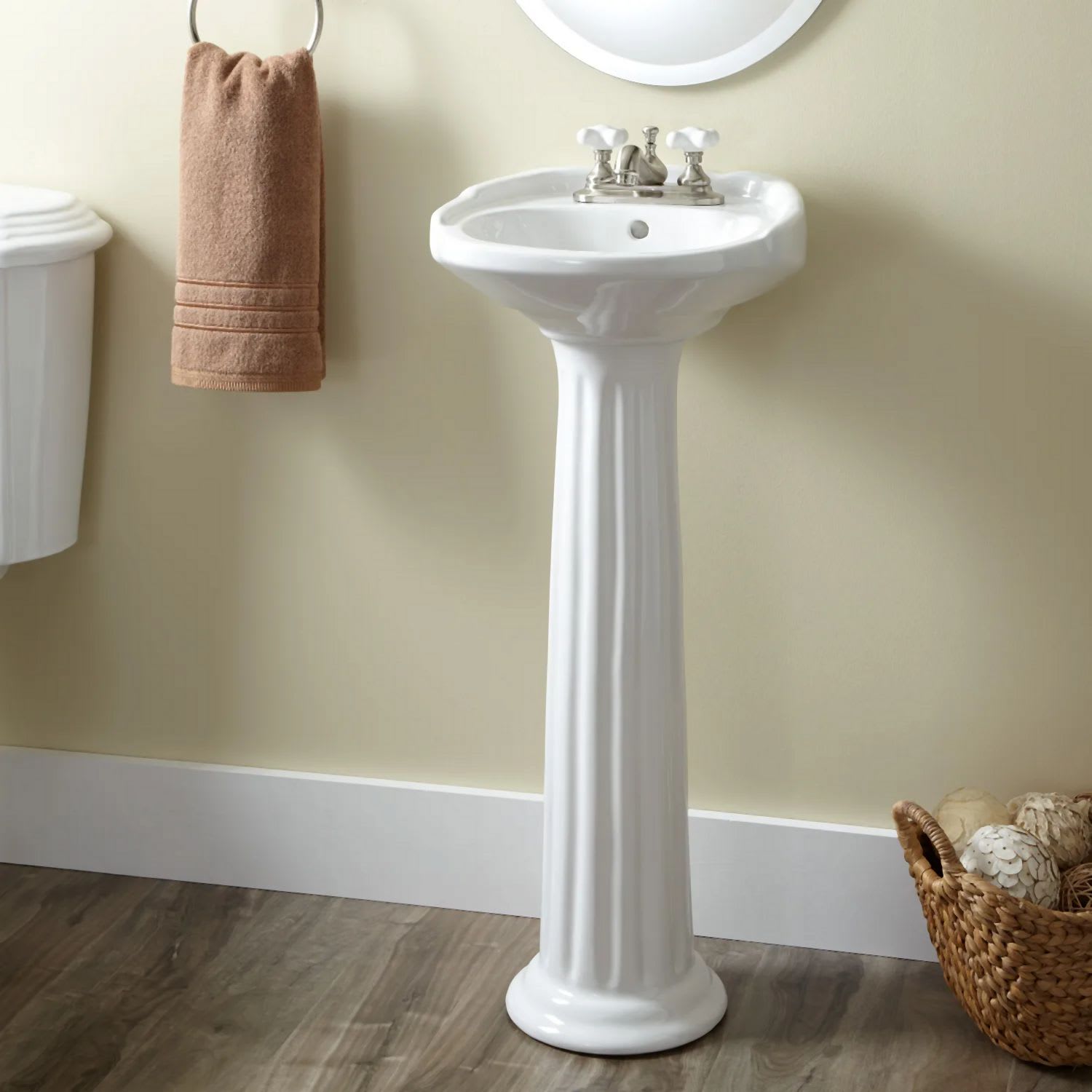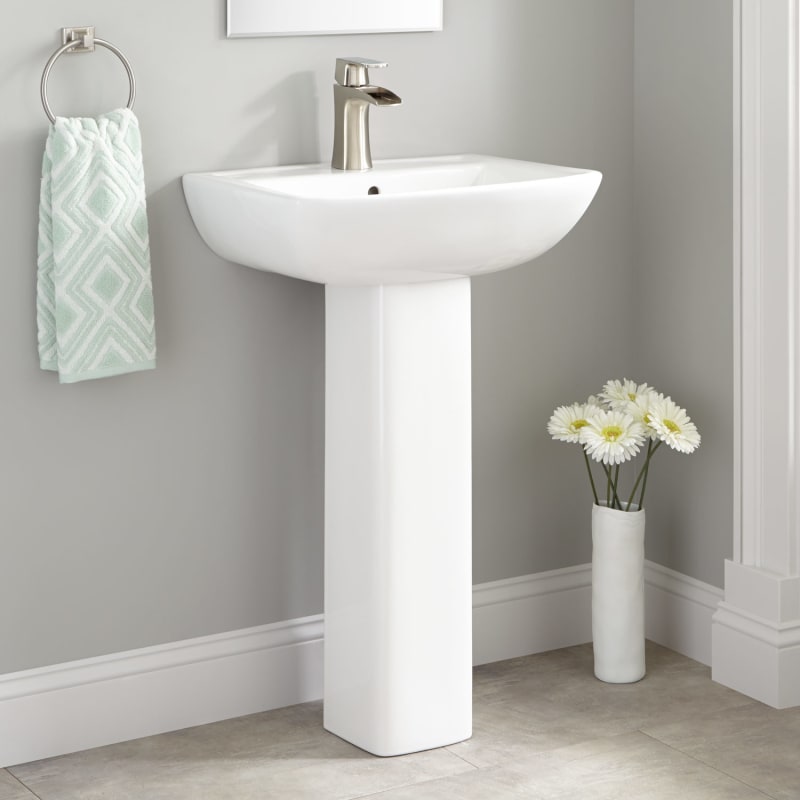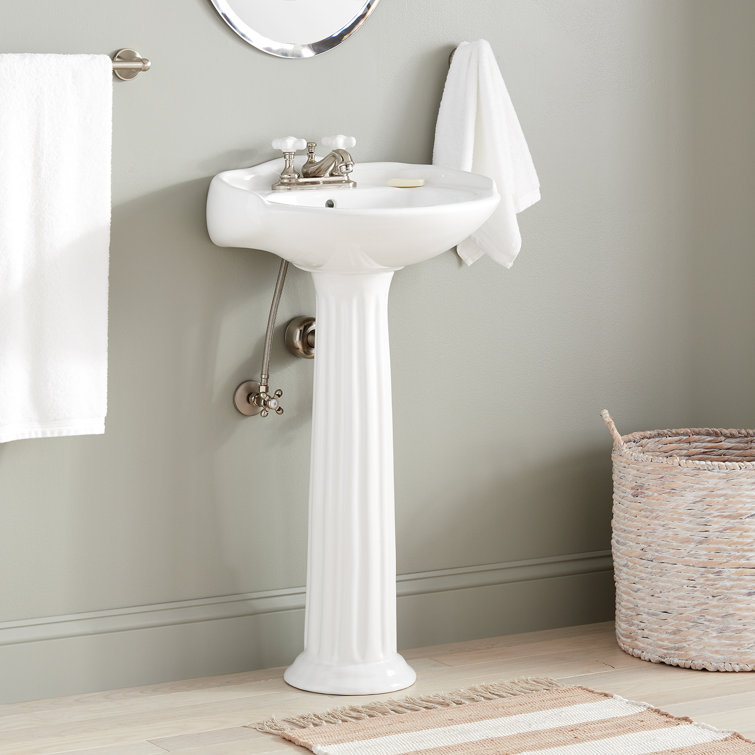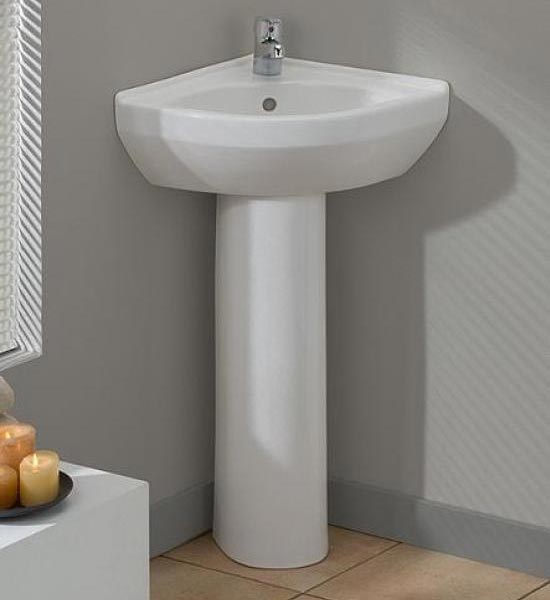When buying a brand-new sink for the bathroom of yours, you'll additionally require the contemporary faucets to choose the sink. Vessel sinks rest on top of the counter, as opposed to being inserted into the sink. These sinks are very suitable for larger bathroom where you will need storage. It's very difficult to work with a bathroom without a good sink.
Images about Porcelain Pedestal Bathroom Sink

The initial choice you need to make involves probably the most fundamental of sink choices: are you wanting free standing bathroom pedestal sinks or would you need bowls put in an enclosure? Both the vanity sink and the pedestal sink will hide your drainage and plumbing and both come in a wide variety of styles and shapes.
Victorian 32″ Large Pedestal Bathroom Sink Heavy Duty Porcelain Pre-Drilled Widespread Faucet Holes With Overflow Renovatoru0027s Supply Manufacturing
Self rimming sinks are usually used when you need additional counter space as you are able to earn the counter as big since you need then cut the hole to lose the sink around the plumbing. Costs of tiny bathroom sinks will be contingent on the type, size, materials and design of the sink you pick.
Signature Hardware 285676
This is the sole assistance for the basin on the sink. Nonetheless, flat when designing tiny bathrooms, it is essential to remember the virtues of large sinks as well. Stone sinks and stainless steel can with stand some condition. You will find some of the most effective selection of bath vanities as well as accessories that go best with the bathroom renovation of yours.
Signature Hardware 912332-4 Farnham 15-1/2″ Vitreous China Pedestal Bathroom Sink with 3 Faucet Holes at 4″ Faucet Centers and Sink Overflow
Signature Hardware 936358
24″ Cierra Porcelain Pedestal Sink
Vintage Porcelain Bathroom Pedestal Sink
Chesapeake White Porcelain Pedestal Lavatory Sink (BASIN ONLY)
Strom Living Bathroom Sinks Pedestal Bathroom Sinks Bathworks
Mini Victorian Porcelain Pedestal Sink – 4″ Centers – White
Carden Porcelain Pedestal Sink
Signature Hardware 273597
Cast Iron Porcelain Enameled Pedestal Sink
Pedestal Basin Sinks
Related Posts:
- How To Fix A Leaking Bathroom Sink Pipe
- Wooden Bathroom Sink Unit
- Extra Hole In Bathroom Sink
- Large Undermount Trough Bathroom Sink
- GFCI Distance From Bathroom Sink
- Satin Nickel Bathroom Sink Faucets
- Black Mold In Bathroom Sink
- Quality Bathroom Sinks
- Foul Smell From Bathroom Sink
- How To Install P Trap Bathroom Sink











